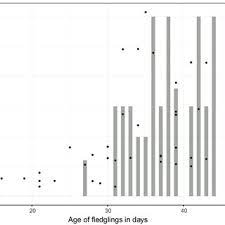Population Estimation of Ungulates and Carnivores: Insights from the DISTANCE Analysis
This post examines how the DISTANCE analysis approach can be used to estimate the populations of ungulates, including wild boar, sambar deer, barking deer, Himalayan Ghoral, Chital deer, and blue bull antelope as well as carnivores like leopards. The Shivalik Report is an essential source for this topic since it offers detailed results on prey analysis and leopard spatially explicit capture-recapture (SECR) research. Understanding ecological dynamics and creating successful conservation plans depend on accurate wildlife population estimates. Since these animals are essential to terrestrial ecosystems, precise population estimates of ungulates and carnivores are crucial.
Ungulate Population Estimation using the DISTANCE Analysis:

DISTANCE analysis is a widely used technique for estimating animal abundance and density based on distance sampling. Collecting distance data between observed individuals and transect lines allows for robust estimations of population parameters. In the case of ungulates, the Shivalik Report presents the results of DISTANCE analysis for six species.
Wild Boar: The DISTANCE analysis provides insights into the density and abundance of wild boars in the study area. The report yields fundamental estimations for monitoring and managing wild boar populations by establishing transects and recording distances to observed individuals.
Sambar Deer: The DISTANCE analysis allows for the estimation of sambar deer density and abundance. By utilizing transect lines and collecting distance data, valuable information on the population dynamics of this species can be obtained. This knowledge is vital for developing conservation strategies that ensure the long-term viability of sambar deer populations.
Barking Deer: DISTANCE analysis aids in determining the density and abundance of barking deer, shedding light on their population status. The data collected through transect surveys and distance measurements provide valuable insights into this species’ ecological requirements and spatial distribution patterns.
Himalayan Ghoral: The application of DISTANCE analysis facilitates the estimation of density and abundance for the Himalayan Ghoral. By implementing appropriate transect designs and collecting distance data, researchers can acquire critical information on this species’ population dynamics, contributing to informed conservation efforts.
Chital Deer: DISTANCE analysis is a valuable tool for estimating the density and abundance of Chital deer. This approach enables researchers to generate population estimates and monitor changes in Chital deer populations over time by systematically collecting distance data along transect lines.
Blue Bull Antelope: The DISTANCE analysis method can be employed to estimate the density and abundance of blue bull antelope populations. By conducting transect surveys and recording distance measurements, valuable insights can be gained into this species’ population dynamics and spatial distribution, aiding in their conservation.
Carnivore Population Estimation using Leopard SECR Analysis:
Apart from ungulates, the Shivalik Report provides insights into carnivore population estimation, explicitly focusing on leopards, using the Spatially Explicit Capture-Recapture (SECR) analysis.
Leopard SECR Analysis: The Leopard SECR analysis employed in the study leverages the unique spot patterns of individual leopards to estimate their density and abundance. By deploying camera traps strategically across the study area, researchers can capture images of individual leopards, allowing for the identification and subsequent estimation of population parameters.
In conclusion, The DISTANCE Analysis
Population estimation of ungulates and carnivores is crucial to wildlife conservation and management. The application of DISTANCE analysis has provided valuable insights into the density and abundance of various ungulate species, including wild boar, sambar deer, barking deer, Himalayan Ghoral, Chital deer, and blue bull antelope. These estimations contribute to our understanding of population dynamics, aiding in developing effective conservation strategies. Furthermore, the Leopard SECR analysis enables accurate assessments of leopard populations, significantly maintaining ecosystem balance. The information derived from these population estimation techniques serves as a foundation for wildlife conservation efforts, helping to protect and preserve these remarkable species for future generations.
References for The DISTANCE Analysis
Heneghan, L., Coleman, D.C., Zou, X., Crossley, D.A. and Haines, B.L. (1999a). Soil Microarthropod Contributions to Decomposition Dynamics: Tropical-Temperate Comparisons of a Single Substrate. Ecology, 80(6), p.1873. doihttps://doi.org/10.2307/176665.
Heneghan, L., Coleman, D.C., Zou, X., Crossley, D.A. and Haines, B.L. (1999b). Soil Microarthropod Contributions to Decomposition Dynamics: Tropical-Temperate Comparisons of a Single Substrate. Ecology, 80(6), p.1873. doi https://doi.org/10.2307/176665.
IUCN (2016). International Union for Conservation of Nature – IUCN. [online] IUCN. Available at: https://www.iucn.org/.
Wildlife.org. (2018). THE WILDLIFE SOCIETY | Leaders in Wildlife Science, Management and Conservation. [online] Available at: https://wildlife.org/.





